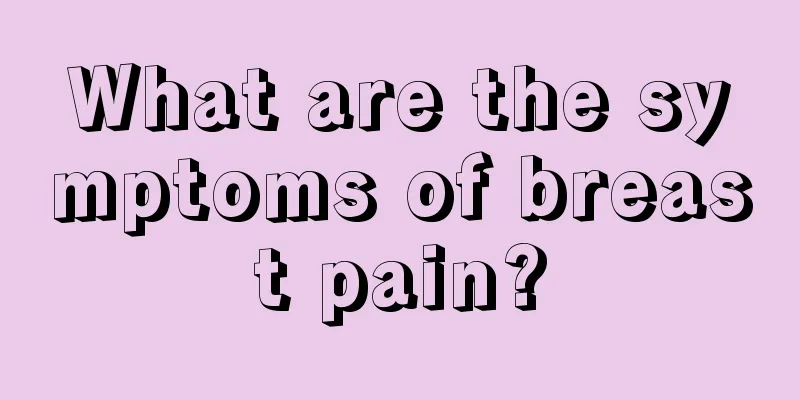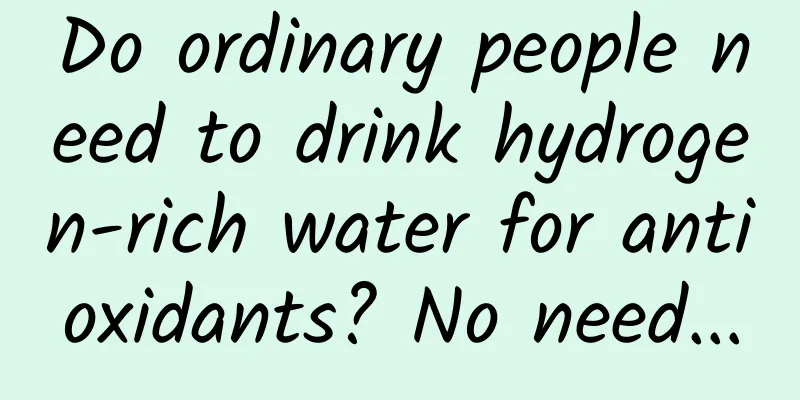What are the causes of amenorrhea? How can it be treated?

|
Author: Yu Qi, Chief Physician, Peking Union Medical College Hospital Reviewer: Bai Wenpei, Chief Physician, Beijing Century Altar Hospital, Capital Medical University Medically speaking, if there is no menstruation for half a year, it is called amenorrhea; or if calculated according to the previous menstrual cycle, for example, if the menstruation was once a month before, but now there are at least three cycles, that is, there is no menstruation for three months, it can also be called amenorrhea. Amenorrhea is divided into physiological amenorrhea and pathological amenorrhea. For women of childbearing age, all amenorrhea conditions are problematic except for amenorrhea caused by pregnancy and breastfeeding. 1. What are the causes of amenorrhea? First, amenorrhea caused by reproductive tract problems. Amenorrhea is caused by various problems in the reproductive tract, such as endometrial damage that prevents bleeding; or damage to the lower reproductive tract, or congenital malformations, such as hymen occlusion and vaginal occlusion, which can cause menstrual blood to be present but unable to flow out. Second, amenorrhea caused by ovarian problems. If the ovaries are not functioning, such as premature ovarian failure, and cannot produce estrogen, it is equivalent to entering menopause in advance. Because the growth of the endometrium depends on estrogen, without estrogen, the endometrium cannot grow and fall off periodically, and menstrual bleeding will not occur. Figure 1 Original copyright image, no permission to reprint Third, central amenorrhea. Central amenorrhea includes damage to the pituitary gland and hypothalamus, or congenital pituitary gland and hypothalamus dysfunction, or pituitary gland and hypothalamus tumors that produce prolactin, or amenorrhea caused by malnutrition. All of these are amenorrhea caused by central problems. Fourth, systemic amenorrhea. For example, polycystic ovary syndrome is not a problem at a certain level, but a problem with the entire system. However, it is still unclear what the problem is. We only know that its characteristics are amenorrhea or menstrual disorders, polycystic ovary manifestations, and elevated androgen levels. From a clinical perspective, such women may also have acne, hirsutism, infertility and other problems. Fifth, iatrogenic causes refer to amenorrhea caused by medical measures, such as artificial abortion. Many people do not pay attention to contraception and regard artificial abortion as a contraceptive method. If artificial abortions are repeated or performed in some informal medical institutions, the endometrium will be severely damaged, which will cause less menstrual flow, uterine adhesions, and even amenorrhea. 2. What are the treatments for amenorrhea? In order to treat amenorrhea, we must first identify the cause of amenorrhea. If amenorrhea is caused by reproductive tract abnormalities, surgical treatment may be required to open up adhesions and clear blocked areas. If amenorrhea is caused by hormonal problems, we will adopt the method of "supplementing what is lacking" to restore normal menstruation. If the ovarian function is declining or there are central reasons, the body lacks estrogen and progesterone, the follicles cannot grow, and the endometrium cannot thicken, then estrogen and progesterone must be supplemented. It should be noted that both hormones must be supplemented. If only estrogen is supplemented, the risk of endometrial cancer is greater. Supplementing progesterone at the same time can prevent endometrial cancer. If amenorrhea is caused by polycystic ovary syndrome, there will be different treatment plans for different people. For example, if the androgen level is high, symptoms such as hirsutism and acne are very serious, contraceptive pills can be used to inhibit androgen. Contraceptive pills have three main functions: contraception, regulating menstruation, and lowering androgen. These three main functions can all be applied in polycystic ovary syndrome. Figure 2 Original copyright image, no permission to reprint If there are no symptoms of hyperandrogenism and the patient simply does not have menstruation, only progesterone supplementation is required. Supplement progesterone for 10-14 days each month and the patient will have menstruation after stopping the medication. This can help the patient resume a normal menstrual cycle. Therefore, different patients with amenorrhea have different causes and the treatment methods are also different. |
<<: Does being infected with human papillomavirus mean that you will definitely get cervical cancer?
>>: Are skin care products containing preservatives not good products?
Recommend
What is the best way to stick tiles when they fall off? What mop is good and clean for mopping tiles?
Sometimes life can bring us "little surprise...
HPV quadrivalent vaccine three injection interval
When it comes to cancer, everyone is quite afraid...
Hepatitis C Virus - "A Future Without Hepatitis"
On the afternoon of October 5th, Beijing time, th...
A woman's fertility can be determined by looking at three parts of her body
In fact, fertility can be seen from some small de...
What is the treatment for leucorrhea with a strong fishy smell?
Abnormal leucorrhea is something that most women ...
DNA prenatal testing
Women need to undergo several pregnancy checkups ...
Bleeding after menstruation
If there is still blood after the menstrual perio...
Advantages of Traditional Chinese Medicine in Treating Liver Fibrosis
1.What is liver fibrosis? Liver fibrosis is the r...
Children's belly "swim ring" promotes atherosclerosis! Qilu Medical College Research
With a better life, not only adults have "sw...
What is the fastest way to deal with diarrhea during breastfeeding?
Women also need to pay attention to their own hea...
Baihe Jiayuan: Real life stories of single men and women staying at home
During the epidemic, some people gave up being re...
Brown menstrual discharge
Women have menstrual blood every month, which is ...
What to do if you are fat and have big breasts
Although female friends all hope that their breas...
How to fall asleep quickly when pregnant women have insomnia
Many pregnant women have trouble sleeping at nigh...









